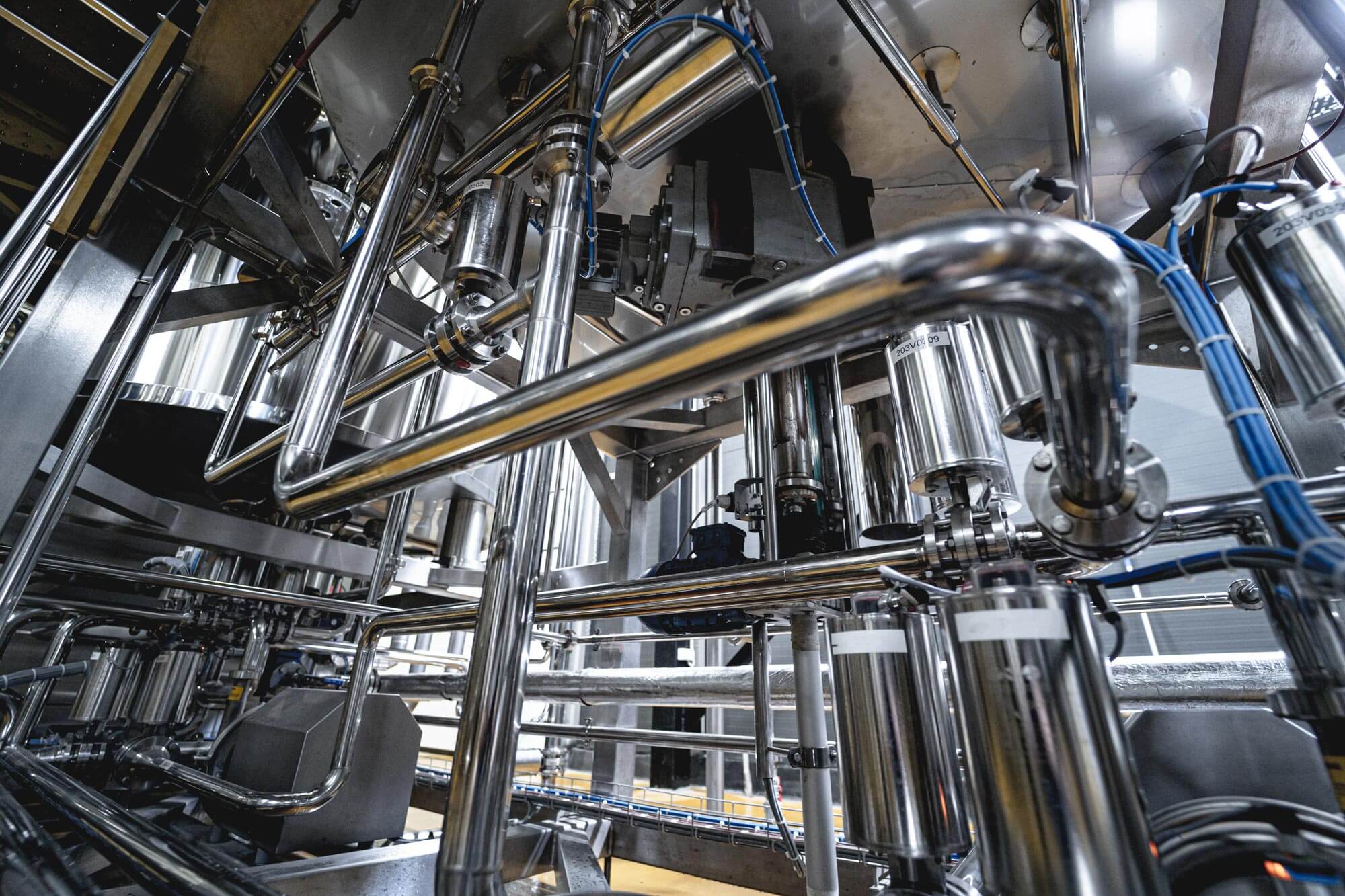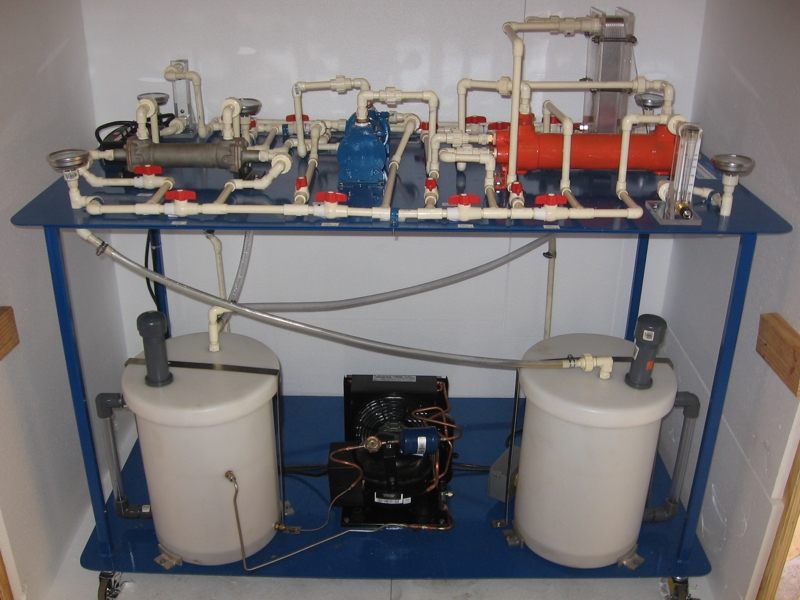What Makes DVS Heat Transfer Systems Ideal for Aerospace Thermal Solutions?
Wiki Article
Technologies in Heat Transfer Equipments: What You Need to Know for Ideal Efficiency
Technologies in Heat transfer systems are changing performance across numerous industries. Advanced products like graphene and nanofluids promise substantial enhancements in thermal conductivity. Meanwhile, the combination of IoT and artificial intelligence provides chances for real-time surveillance and boosted power performance. The landscape of thermal monitoring is quickly evolving. Comprehending these developments is crucial for achieving perfect system performance and sustainability in the future. What particular developments are forming this change?Emerging Products for Enhanced Heat Transfer

Advanced Heat Exchanger Layouts
While typical Heat exchangers have served their purpose in various applications, progressed designs are now arising to meet the raising demands for efficiency and performance. These ingenious layouts, such as plate, shell-and-tube, and finned-tube Heat exchangers, integrate improved surface area locations and improved circulation patterns to increase thermal transfer prices. Additionally, compact designs enable decreased room needs without endangering performance. Advanced materials, such as composites and corrosion-resistant alloys, furthermore boost sturdiness and efficiency under extreme problems. Moreover, simulation modern technologies and computational fluid dynamics are increasingly used to fine-tune these designs, ensuring peak Heat transfer attributes. As sectors look for to minimize energy consumption and make the most of outcome, the fostering of innovative Heat exchanger designs is crucial in achieving these goals.The Duty of Nanotechnology in Heat Transfer
Nanotechnology plays an essential function in enhancing thermal conductivity within Heat transfer systems. By manipulating products at the nanoscale, scientists have attained significant renovations in energy performance. These innovations not only enhance efficiency but also add to more sustainable power services.Improved Thermal Conductivity
Substantial advancements in thermal conductivity have actually arised with the application of nanotechnology, reinventing Heat transfer systems across various markets. By integrating nanoparticles right into Heat transfer liquids and products, scientists have actually accomplished amazing increases in thermal conductivity. These nanoparticles, such as carbon nanotubes, graphene, and metal oxides, improve the Heat transfer buildings as a result of their high surface and unique thermal characteristics. The resulting composites exhibit enhanced efficiency in applications varying from electronics cooling down systems to renewable resource innovations. The capacity to customize the dimension, form, and structure of nanoparticles permits for enhanced thermal management options. As a result, nanotechnology remains to play a crucial role in the development of much more reliable and efficient Heat transfer systems, leading the way for enhanced industrial applications.
Power Effectiveness Improvements

Combination of IoT in Heat Transfer Equipments
The assimilation of IoT in Heat transfer systems introduces the execution of smart sensors that improve operational effectiveness. These sensors make it possible for real-time information surveillance, permitting prompt changes and optimizations. This technological improvement has the prospective to significantly enhance efficiency and power monitoring in Heat transfer applications.Smart Sensors Application
As Heat transfer systems evolve, the assimilation of clever sensors with the Net of Points (IoT) has arised as a transformative strategy. These sensors allow real-time tracking of temperature level, pressure, and flow rates, improving system effectiveness and integrity. By gathering and transmitting information, they help with proactive upkeep, decreasing the threat of system failings. Additionally, clever sensors add to energy savings by refining operational specifications based on environmental problems. Their capacity to examine patterns and anomalies permits notified decision-making, guaranteeing peak efficiency of Heat transfer systems. As markets progressively adopt this technology, the application of clever sensors stands to transform just how Heat transfer systems are taken care of, leading the way for greater sustainability and enhanced performance results.Real-Time Information Monitoring
Just how can real-time information keeping an eye on boost the performance of Heat transfer systems? By integrating Internet of Points (IoT) innovation, Heat transfer systems can leverage constant information collection from wise sensors. This real-time surveillance permits for instant evaluation description of stress, circulation, and temperature level prices, making it possible for operators to recognize inadequacies quickly. As a result, changes can be made to optimize efficiency, lower energy usage, and extend equipment life expectancy. In addition, predictive maintenance can be implemented, lessening unanticipated downtime and expensive repair work. The capability to imagine efficiency metrics through control panels improves decision-making, promoting a proactive method to system monitoring. Eventually, real-time information monitoring not just enhances operational performance but likewise adds to sustainability objectives within industrial procedures.Energy Efficiency and Sustainability Trends
Power effectiveness and sustainability fads are reshaping the landscape of Heat transfer systems, driving innovation and compliance across various sectors. Organizations are progressively focusing on energy-efficient layouts to lower functional expenses and decrease ecological influences. The assimilation of renewable energy resources is becoming much more common, making it possible for Heat transfer systems to operate sustainably while satisfying regulatory demands. Furthermore, developments in modern technologies and materials promote lower power usage and boost overall efficiency. Lifecycle evaluations are additionally gaining traction, enabling companies to assess the ecological effect of Heat transfer systems from production to disposal. This concentrate on sustainability not just sustains company obligation yet also settings organizations competitively in a market where customers significantly prefer eco-friendly options. Energy efficiency and sustainability continue to be crucial considerations for future developments in Heat transfer innovation.Innovations in Thermal Monitoring Solutions
While the demand for efficient Heat transfer proceeds to climb, technologies in thermal administration solutions are emerging to address both performance and sustainability obstacles. Advanced products, such as stage adjustment materials and nanofluids, are being developed to enhance Heat transfer efficiency - DVS Heat Transfer Systems. These products enhance thermal conductivity and enable better temperature level guideline in different applications. Additionally, modern technologies like energetic thermal control systems are obtaining grip, allowing real-time changes to take care of Heat flow properly. These systems add to power financial savings and decrease the environmental impact of thermal processes. In addition, the integration of IoT in thermal management helps with monitoring and predictive maintenance, guaranteeing optimized performance and longevity of Heat transfer systems. In general, these developments stand for considerable strides towards more lasting thermal administration techniquesFuture Directions in Heat Transfer Innovation
Emerging innovations in thermal management options indicate an encouraging future for Heat transfer modern technology. Scientists are increasingly concentrating on developing products with exceptional thermal conductivity and boosted power effectiveness. Developments such as nanofluids, which have suspended nanoparticles, supply considerable improvements in Heat transfer performance. Furthermore, the integration of clever products that adjust to varying temperature level conditions is getting traction, permitting more responsive and effective systems. The increase of additive production methods is likewise making it possible for the design of complicated Heat exchanger geometries that maximize liquid flow. The execution of machine learning algorithms is expected to change the optimization of Heat transfer systems, facilitating predictive upkeep and performance improvement. Jointly, these improvements are positioned to transform the landscape of Heat transfer technologies in various markets.
Often Asked Inquiries

Exactly how Do I Select the Right Heat Transfer System for My Application?
Choosing the ideal Heat transfer system includes examining application needs, consisting of temperature level arrays, fluid buildings, and efficiency needs. Evaluating system kinds, maintenance considerations, and cost-effectiveness likewise plays a vital role in making an informed decision.What Are the Upkeep Needs for Advanced Heat Exchangers?
Upkeep needs for sophisticated Heat exchangers commonly include normal inspections, keeping track of for leaks, cleansing of surfaces, and ensuring optimal circulation rates. Following maker standards warranties efficient procedure and lengthens the equipment's life expectancy.
How Do Ecological Elements Influence Heat Transfer Performance?
Environmental aspects significantly influence Heat transfer effectiveness. Variations in temperature, air flow, and humidity influence thermal conductivity and convective Heat transfer, inevitably affecting system efficiency and requiring consideration during the design and procedure of Heat transfer systems.What Security Standards Apply to Heat Transfer Solutions?
Safety and security requirements for Heat transfer systems commonly consist of standards from companies such as ASME and ASTM. DVS Heat Transfer Systems. These criteria address materials, design, and operational techniques to ensure reliability, effectiveness, and protection against threats in numerous applications
How Can I Fix Usual Heat Transfer System Issues?
Troubleshooting typical Heat transfer system concerns involves checking for leaks, guaranteeing proper liquid continue reading this circulation, inspecting insulation honesty, and confirming temperature differentials. Determining these factors can aid preserve system performance and stop further complications.Nanotechnology plays a crucial role in enhancing thermal conductivity within Heat transfer systems. Significant developments in thermal conductivity have arised via the application of nanotechnology, changing Heat transfer systems across different markets. Advancements in thermal conductivity through nanotechnology have Web Site actually led the method for exceptional renovations in power performance within Heat transfer systems. Energy performance and sustainability trends are improving the landscape of Heat transfer systems, driving technology and conformity throughout numerous markets. The combination of IoT in thermal management helps with surveillance and predictive upkeep, ensuring enhanced efficiency and durability of Heat transfer systems.
Report this wiki page